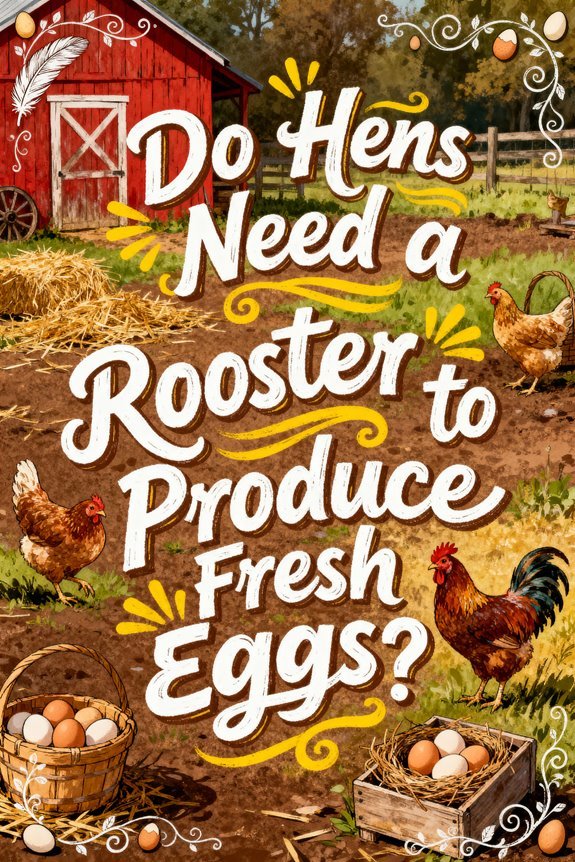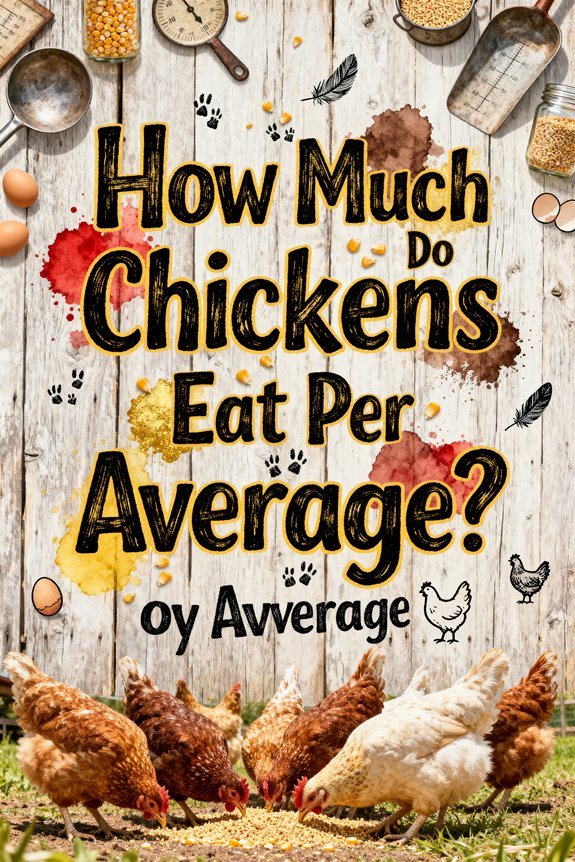What Makes Cuckoo Maran Chicken Eggs So Special?
Cuckoo Maran chicken eggs stand out for their distinctive chocolate-brown shells, scoring 7-9 on the Marans color scale. You’ll find these eggs have superior shell structure with enhanced calcium concentrations and thicker inner membranes, making them exceptionally fresh and safe. They’re prized by chefs for their superior emulsification properties and rich taste, performing exceptionally well in delicate cooking methods. Understanding these unique characteristics reveals why they command premium prices in specialty markets.
The Extraordinary Dark Chocolate Shell Color
The rich chocolate-brown eggs of Cuckoo Marans stand as a demonstration to complex genetic inheritance and selective breeding. You’ll find their distinctive shells scoring between 7 and 9 on the Marans egg-color scale, showcasing deep reddish-brown to copper tones with occasional speckling. This remarkable egg pigmentation stems from protoporphyrin IX deposits during shell formation.
The breed’s unique coloring traces back to genetic contributions from French Cuckoo, Langshans, Faverolles, and Barred Plymouth Rocks. While color variation occurs naturally, even within individual hens’ laying patterns, the darkest shells typically come from carefully maintained bloodlines. The barred gene, particularly prominent in females, correlates with deeper shell colors. You’ll notice these eggs’ enhanced visual appeal through their glossy finish and superior shell thickness, setting them apart from conventional brown eggs. Many French culinary experts specifically seek out these eggs because of their thicker inner membrane and exceptional freshness. Supplementing hens with dried mealworms during molting can help maintain consistent egg quality and shell coloration.
Superior Shell Structure and Food Safety
Structural integrity stands as a hallmark of Cuckoo Maran eggs, where enhanced calcium concentrations and mineral-rich compositions create exceptionally robust shells. You’ll find these eggs possess superior shell thickness and density, providing heightened protection against mechanical damage during handling and storage.
The eggs’ advanced microstructure delivers exceptional food safety benefits through improved microbial barrier properties. Their thicker cuticles and enhanced mineral content create a more impermeable shield against bacterial infiltration, particularly concerning common foodborne pathogens like Salmonella. This protective quality stems from the breed’s genetic predisposition, reinforced through selective breeding since the 1800s, combined with ideal mineral absorption from properly supplemented diets. Maintaining a proper protein level in layer feed ensures optimal shell formation and strength. These remarkable eggs maintain consistent quality throughout the year, as Cuckoo Marans are known for their reliable year-round laying. The result is an egg that maintains freshness longer while offering superior resistance to contamination, making it an exceptionally safe choice for consumption.
Culinary Excellence and Chef Preferences
Revered among culinary professionals worldwide, Cuckoo Maran eggs command attention through their distinctive dark chocolate-brown shells and superior cooking properties. You’ll find their naturally artistic appearance enhancing plate presentations while their taste richness sets them apart in gourmet settings. Quality eggs like these pair wonderfully with homemade flock treats to maintain optimal laying health and shell strength. While yearly egg production ranges from 150-200, their exceptional qualities make them highly sought after by chefs.
These eggs demonstrate remarkable egg versatility in professional kitchens. Their medium to large size offers ideal portions for restaurant service. Their thicker membranes and smaller pores contribute to extended freshness and better structural integrity during cooking. You’ll notice they perform exceptionally well in delicate preparations like poaching and maintain consistency in baked goods. Chefs particularly value their robust yolks and superior emulsification properties, which guarantee reliable results in custards and sauces. The eggs’ natural attributes, from their striking shell color to their enhanced durability, make them a preferred choice in high-end culinary applications.
Laying Patterns and Production Cycles
While many chicken breeds demonstrate variable laying patterns, Cuckoo Marans exhibit predictable production cycles that yield 150-200 eggs annually. You’ll find they maintain consistent laying habits throughout the year, producing 4-6 eggs weekly per hen, even during winter months with proper lighting support. Like the hardy Australorp breed, they adapt well to various climate conditions and demonstrate excellent productivity. Unlike sex-linked breeds, their gender cannot be determined by color at hatching.
These birds begin laying at 20-24 weeks of age, reaching peak production around 28 weeks. Seasonal influences affect their output, though they’re less sensitive to daylight changes than other breeds. While cold-hardy, they may show reduced laying during extreme heat. You’ll notice their signature dark brown eggs are most intense during peak laying periods, with color potentially lightening as hens age. Their productive lifespan typically spans 2-3 years, making them reliable performers for small-scale egg production. The speckled brown eggs they produce are highly sought after in the poultry community for their unique appearance and quality.
Heritage and Breed Characteristics
Originally developed in the coastal regions of France, Cuckoo Marans stand out as a heritage breed prized for their dual-purpose capabilities and distinctive characteristics. You’ll find these medium to large-sized birds featuring a unique cuckoo pattern of black and white feathers, with roosters weighing 7-8 pounds and hens 6-6.5 pounds. These hardy birds produce russet colored eggs throughout the year. Like the Plymouth Rock breed, they excel at both egg production and meat quality.
The breed’s heritage significance extends beyond its physical traits. Their cold-hardy abilities make them exceptionally resilient in challenging weather conditions. Their adaptability to various climates and docile temperament have made them valuable for breed preservation efforts. You’ll notice their straight red combs, matching wattles, and lightly feathered legs, setting them apart from similar breeds. While roosters can show territorial behavior, the hens typically display strong maternal instincts. Conservation groups actively work to maintain the breed’s genetic diversity, ensuring these traditional characteristics remain intact for future generations.
Market Value and Consumer Appeal
The distinctive dark chocolate-brown eggs of Cuckoo Marans command significant price premiums in specialty markets, typically selling for $2.50 per dozen compared to conventional eggs. You’ll find these eggs mainly in farmers’ markets, gourmet stores, and specialty organic shops, where price differentiation reflects their unique attributes.
Consumer education plays an essential role in market value, as buyers associate the deep brown coloration (rated #3 to #6 on shade scales) with superior quality. While Cuckoo Marans lay fewer eggs annually (150-200) than commercial breeds, their limited supply supports premium pricing. You can maximize their market potential through direct-to-consumer channels like CSAs and egg clubs. The breed’s visual appeal, combined with consumers’ perception of better taste and quality, creates sustained demand in niche markets. Starting egg production at 6-9 months old, Cuckoo Marans hens require patience before contributing to market supply.
Breeding for Quality and Color Retention
Maintaining the distinctive dark chocolate-brown eggs that command premium market prices requires strategic breeding practices focused on genetic selection. You’ll find breeders utilizing spiral mating systems and careful pedigree tracking to guarantee genetic stability while preventing inbreeding depression. The selection process prioritizes hens that consistently produce eggs with intense egg pigmentation, achieved through monitoring shell porphyrin concentrations across generations.
The breeding program faces unique challenges, as the barring gene affecting the cuckoo pattern influences shell color deposition. Starting production at 24 to 36 weeks, hens require careful monitoring to establish reliable laying patterns. You must account for a 10-15% annual decline in egg production and lower hatch rates due to thicker shells. To combat these issues, breeders implement strict culling protocols and maintain detailed records of egg color scoring, ensuring only the highest quality genetics continue in the breeding population.





